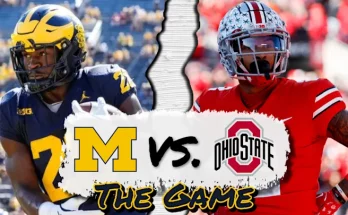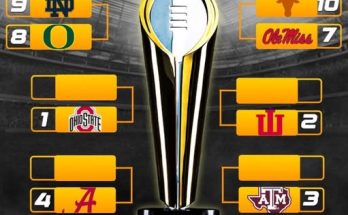The college basketball recruiting world was sent into a frenzy after an unexpected announcement that reverberated far beyond the usual hoops circles. ESPN, the foremost authority in sports reporting, dropped a bombshell that instantly dominated headlines: the nation’s No. 1 basketball recruit, a player long believed to be heavily favored by powerhouses Tennessee and Florida, has stunned fans and analysts alike by committing to the Texas Longhorns. This decision is not just a major win for Texas but a seismic shift in the landscape of college basketball recruiting, signaling a potential reshaping of power dynamics in the NCAA.
For years, the Southeastern Conference (SEC), home to Tennessee and Florida, has been a hotbed for top basketball talent. Both programs have made significant investments to build competitive rosters capable of contending on the national stage. The anticipation that this top recruit would bolster either team seemed all but guaranteed given prior recruitment signals, relationships, and geographical ties. The fact that this elite prospect flipped the script and pledged allegiance to the University of Texas—an institution in the fiercely competitive Big 12 Conference—came as a stunning surprise to many experts and fans alike.
The recruit in question has been on the radar of scouts, coaches, and media since early in his high school career. His blend of athleticism, skill, basketball IQ, and leadership has set him apart from his peers, earning him the coveted No. 1 ranking in the class nationally. His ability to score from anywhere on the floor, handle pressure, and make decisive plays makes him an ideal fit for any collegiate program. Given the intense interest from top programs across the country, many expected a protracted recruitment battle culminating in a choice between Tennessee and Florida, both renowned for their player development and competitive environments.
However, the Longhorns’ staff capitalized on their relationship-building and pitch, convincing the recruit and his family that Texas was the ideal destination for his growth both on and off the court. Texas, known for its rich basketball tradition and growing commitment to excellence, presented a comprehensive vision that resonated deeply with the player’s ambitions. The promise of a dynamic playing style, strong academic support, and a vibrant community created an irresistible package that ultimately swayed the decision.
This commitment is a testament not only to the recruit’s talents but also to the strategic prowess of the Texas Longhorns’ recruiting team. Navigating the fierce competition for elite athletes requires a combination of timing, personal connection, and an ability to articulate a clear vision of success. Texas’ ability to outmaneuver perennial SEC powers to secure this top prospect reflects their rise as a national powerhouse. It also underscores a broader shift in recruiting dynamics, where traditional regional loyalties are giving way to more fluid and competitive national races for talent.
From the perspective of Tennessee and Florida, the loss is significant. Both programs invested considerable resources into courting this player, believing he would be a cornerstone of their future success. The recruit’s commitment elsewhere forces both schools to reassess their recruiting strategies and underscores the volatility and unpredictability inherent in college sports recruiting. While they still boast strong rosters and other talented prospects, missing out on the nation’s top recruit is a setback that cannot be easily overlooked.
For Texas, however, this acquisition could be transformative. Securing the nation’s best player not only strengthens their roster immediately but also sends a powerful message to future recruits. It establishes Texas as a destination where elite talent wants to develop and compete at the highest level. The Longhorns can now build around this player’s exceptional skill set, potentially reshaping their offensive and defensive schemes to maximize his impact. This addition will likely energize the fan base and elevate expectations for the coming seasons.
The broader implications of this commitment also touch on the evolving nature of college basketball recruiting in the age of NIL (Name, Image, Likeness) deals and increased transfer mobility. Top recruits are more informed and empowered than ever before to make choices that align with their personal goals, brand potential, and long-term career plans. Texas’ location, market size, and growing basketball profile provide fertile ground for a player seeking to maximize both athletic and off-court opportunities.
In addition to the immediate on-court impact, this recruit’s decision to join Texas may influence coaching staff dynamics, as the Longhorns look to build a team that complements this talent. Coaching strategies, playing styles, and roster construction will likely evolve around his unique capabilities. Texas is positioning itself not only to compete but to dominate, with the resources and vision to challenge traditional basketball powerhouses.
The excitement around this commitment extends beyond college basketball circles. Analysts and media outlets nationwide have lauded Texas’ ability to land such a prized recruit, highlighting it as a masterstroke of recruiting acumen and strategic vision. The buzz is palpable, with fans eagerly anticipating how this player will mesh with the Longhorns’ existing core and how his presence might impact the team’s chances in conference and national tournaments.
While there is often a period of adjustment as a new recruit adapts to the collegiate game, the anticipation surrounding this player suggests he is ready to make an immediate impact. His skill set translates well to the college game, and his mental toughness and competitive nature position him to thrive under the bright lights and pressure of NCAA basketball. Texas fans have good reason to be optimistic about the future, as this commitment could signal the beginning of a new era of sustained success.
Moreover, this announcement underscores the increasingly national scope of basketball recruiting. No longer are top recruits confined by geography or regional preferences. Instead, the best players weigh opportunities across conferences and states, evaluating programs based on fit, development potential, and overall experience. Texas’ success in landing this recruit exemplifies the changing landscape where programs willing to innovate and make bold moves can rewrite recruiting narratives.
Looking ahead, the ripple effects of this commitment may extend into future recruiting classes. Other high-profile prospects observing Texas’ ability to secure such a talent may be influenced to consider the Longhorns more seriously. Coaches will use this commitment as a recruiting tool, showing tangible evidence of the program’s upward trajectory and appeal. This domino effect could accelerate Texas’ rise to prominence in college basketball and alter competitive balances within the Big 12 and beyond.



